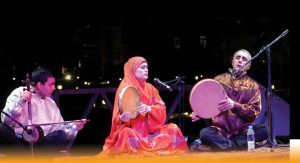Luciano Pavarotti
TAMARA SINYAVSKAYA – OPERA QUEEN
 Once Tamara Sinyavskaya admitted that she always loved difficult tasks, and fate generously endowed them with them throughout her creative life – each new opera party as a new peak requiring conquest. And such peaks are not enough for one mountain range.
Once Tamara Sinyavskaya admitted that she always loved difficult tasks, and fate generously endowed them with them throughout her creative life – each new opera party as a new peak requiring conquest. And such peaks are not enough for one mountain range.
Tamara Ilyinichna managed to make a dizzying career as an opera singer, earn recognition of connoisseurs of vocal skills around the world, forever write her name in the history of art, becoming a great soloist of the second half of the 20th century.
As a child, Tamara loved to go into the porches of old Moscow houses, where there was excellent acoustics, and arrange real concerts, listening to the sound of her voice. singer Tamara Sinyavskaya Especially she liked to imitate the famous Argentine singer Lolita Torres, whose fame was then booming throughout the world. Continue reading
History of The Rolling Stones
 The Rolling Stones is a legendary English rock band.
The Rolling Stones is a legendary English rock band.
The debut of the group took place on July 12, 1962 on the stage of the Marquee Jazz Club. The first composition of the rock group included Mick Jagger (Mick Jagger) – vocals; Keith Richards (Keith Richards) – rhythm guitar, vocals; Dick Taylor (Dick Taylor) – bass; Brian Jones (Brian Jones) – solo guitar, vocals; Ian Stewart (Ian Stewart) – keys; Mick Avory – drums.
Credit for start and business development!
Advertising
The band was originally called The Rollin Stones. The musicians performed songs by American authors, including the bluesmen Muddy Waters and Bo Didley, and also performed with very pop numbers, processing them in their own way. It was Muddy Waters’ song Rollin Stone that formed the basis of the name of the group. The idea was proposed by Brian Jones, who was then the central figure in the group. Continue reading
Mugham
MUG AM is the main form (genre) of Azerbaijani professional music of oral tradition.
AM is the main form (genre) of Azerbaijani professional music of oral tradition.
Part of the pan-eastern culture of macamata. The poetic basis of Mugam is the gazelles of classical and modern poets. Monodial mugham art has developed over many centuries, transmitted from generation to generation.
The teaching method is based on auditory perception, memorization and creative comprehension of mugham information transmitted from the master (ustad) to the student (shagird). Cyclic mugam compositions are embodied in small and large instrumental (solo) and vocal-instrumental (ensemble) forms. The mugham composition is based on frets (modes), each of which has a characteristic final melodic formula (ayag).
An important feature of Azerbaijani Mugam is the improvisation of a metrically free ornamental melody within the framework of a certain canon. Performers also have some freedom in composing a mugam composition (selection of parts, their sequence and quantity). Depending on local characteristics, time (season, time of day) of performance, talent of the performer is the same. mugams can have different options. Mugam schools are preserved: Baku, Karabakh, Shirvan, etc. Continue reading



